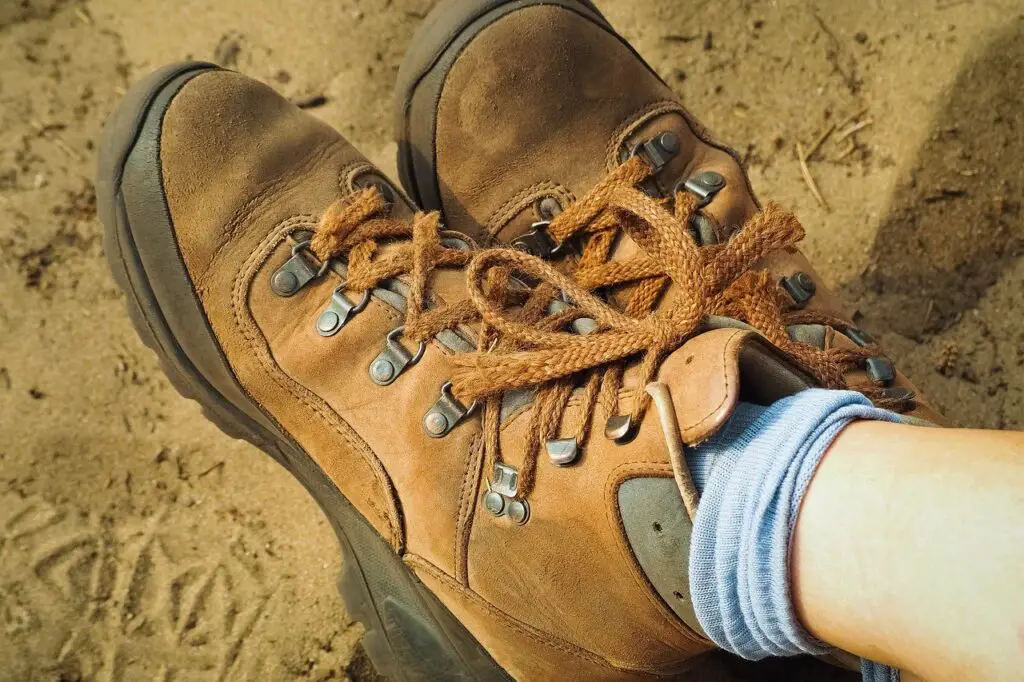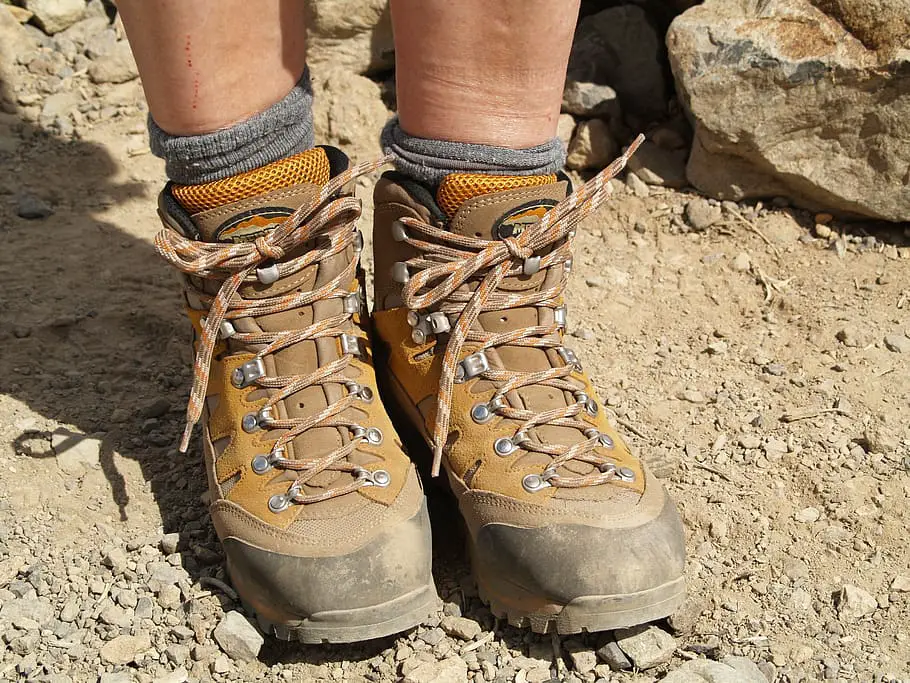Considering how much toe room is needed in your hiking boots is an important factor when making your purchase, whether it’s your first dedicated pair or you’re replacing your current set of boots.
In general, how much toe room is needed in hiking boots comes down to personal comfort, but your hiking boots should allow room for your toes to wiggle without your foot shifting around in them, and you should be able to fit two fingers snugly between your heel and the back of your boot.
When considering toe room in your hiking boots, be sure that your toes do not hit the front of the boot when going downhill. This can cause blackened toenails over time from the constant impact.
Finding the right fit and toe space in your hiking boots is something you’ll want to invest your time in, as it will greatly impact the enjoyability and length of your hikes. We’ll explore some key points to consider below.

How To Tell How Much Toe Room Is Needed In Your Hiking Boots
When you’re shopping for and trying on hiking boots, you’ll want to keep a few things in mind as you select your next pair. We’ll dive into these below.
Testing The Overall Fit Of Your Hiking Boots
The most important factor of a good pair of hiking boots is the overall fit, and how much toe room you’ll need is an important factor here. Your heel should be locked in place to prevent blisters caused from friction, and your toes shouldn’t hit the front of the boot when going downhill – this can lead to blackened toenails. You should be able to wiggle your toes freely, and still have a little bit of room to move your foot within the boot.
The Two-Finger Test
When trying your hiking boots on, start with the boots unlaced, stand up, and slide your foot as far forward in the boot as possible. Test to make sure you can snugly fit two fingers between the heel of your foot and the back of the boot. If you have extra room, go down a half size or more. If you can’t fit two fingers in, it’s time to move up by a half or full size.
Check For Width Fit And Heel Lift
Once you’ve got your boots laced up, stand up and rock your back and forth and side to side. Do your feet feel squeezed or painful? Don’t ignore this – having the proper width boot is critical to long-term comfort and how long you’ll be able to hike.
Additionally, pay attention to how much (if any) your heel lifts off the sole of the boot. Less heel lift is better here! Aim for none, although up to a quarter inch is acceptable.
Also pay attention to any pinching inside the boot – this will not get better over time, so if there’s pinching now, it’s time to move on to a different pair.
It’s Best To Buy Hiking Boots After A Long Day On Your Feet
Considering the fact that your feet can swell up to a half size bigger after a day on the trail, it’s best to fit for hiking boots after a full day of being on your feet (if possible). If not possible, then consider trying on hiking boots that are a half size larger than the typical shoe you normally wear. Be mindful of the above points and make sure your foot doesn’t shift side to side.
Bring Your Hiking Socks
Due to the fact that most hikers wear hiking socks, you’ll want to try on your boots with your favorite pair of hiking socks as well to give you the most realistic fit you can expect.

How To Improve The Fit Of Your Hiking Boots
If you’ve already got a pair of hiking boots, maybe you’re trying to find a way to increase the performance while on the trail. Using these simple tricks will help you enjoy your experience to the fullest.
Change The Lace Pressure Of Your Hiking Boots
Experiment with tying your hiking boots at varying degrees of pressure to get the right feel. Tie them too tight, and you’ll notice ankle pressure and pain spots. Tie them too loosely, and you’ll be compromising your balance and leaving yourself open to blisters.
Keep Your Feet Dry
Whether it’s because of sweating or external moisture like crossing a stream or creek, water in your boots is bad news. This can cause slipping and friction inside the boot, again leading to blisters. Externally, some materials aren’t designed to hold up to water and can loosen, affecting ankle support and stability, which can lead to injury. Make sure your boots are waterproof and breathable (your socks too, if possible).
Wrapping Up How Much Toe Room Is Needed In Hiking Boots
So now you’ve found out some helpful ways to ensure you have a great-fitting next pair of hiking boots. Feel free to leave us any tips or tricks you’ve found in the comments below, along with any questions. While you’re here, check out our guide on hiking boots vs work boots.

